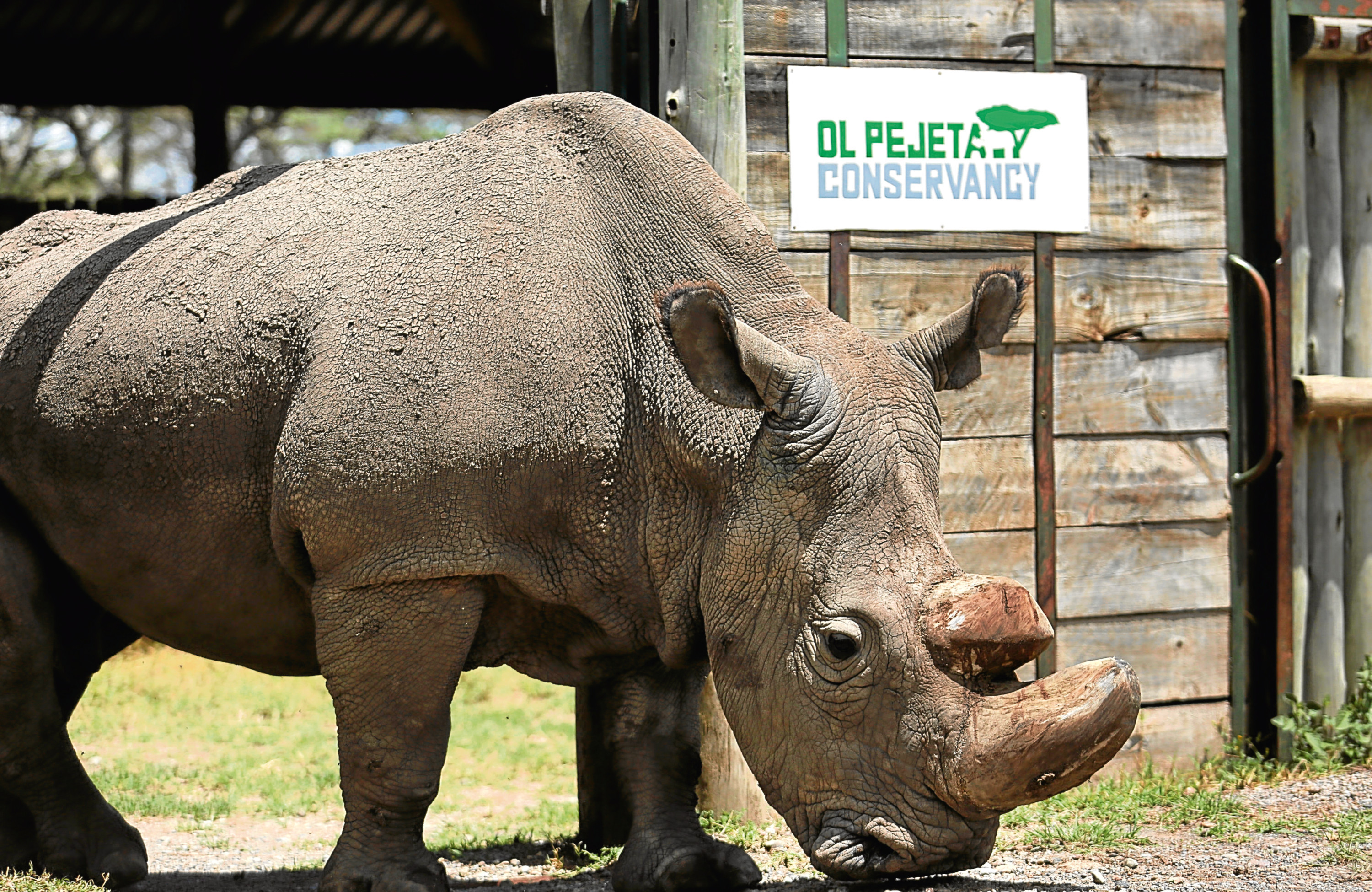
SUDAN was the rhino who escaped extinction once, but now it seems we’ll never see his like again.
The 45-year-old northern white rhino had been plucked from the wild, where he faced certain death, in the 1970s.
From there, he was taken to a zoo in then-Czechoslovakia, and much later moved to Kenya where he lived from 2009 until his death this month.
Having sired two females, Sudan played a significant part in keeping his breed alive, although all that is left now are his daughter and granddaughter.
It was hoped that when Sudan was moved back to Kenya’s Ol Pejeta conservation site, the fact his new surroundings looked like his native habitat would put him in the mood to breed some more, but nothing happened and he was retired from being a mate four years ago.
All of this, of course, meant males of the subspecies were in serious danger of extinction, and they even tried mating the females with a southern white male.
Alas, this also failed, and as a last resort, a social media campaign began to amass enough funds to pay for the development of rhino IVF.
The very thing that human couples turn to when they struggle to have children is now the only slim — very slim — hope we have of seeing new northern white rhinos born.
Sudan’s genetic material has been gathered in order to attempt this, although rhino IVF is brand-new, extremely expensive, and many an expert has already cast doubt on it working at all.
The idea is to use the stored sperm from several northern white males and eggs from the remaining young females, and implant an embryo in a southern white rhino — a surrogate mother.
Age-related ill health were what killed Sudan in the end, and the poor creature had become so unwell, they simply had to let him go.
In the past couple of hundred years, the West African black rhino has also become extinct, and it’s thought as many as 20,000 plants and animals could be lost to us forever in the years ahead, teetering as they are close to the situation Sudan was in.
Sadly, it is very much a case where man can be at least partly blamed.
“Sudan’s death is a cruel symbol of human disregard for nature and it saddened everyone who knew him,” said Jan Stejskal, from the Czech zoo where he had spent so much of his life.
He did, however, stress that we can’t give up on the northern white rhino, and it is vital that we press forward with the new technologies.
There are many reasons why the northern white is so rare.
There are five species of rhinoceros, our second-biggest mammal after the elephant.
Sudan, who in human terms was about 90, had been the only male left since 2014, when another male died and alarm bells really started ringing.
These rhinos’ population was almost wiped out in places like Sudan itself, Chad, Uganda and other African nations, in a poaching crisis during the 1970s and 80s, when Sudan himself was plucked to safety.
As rhinoceros horn is used in traditional Chinese medicine, and for dagger handles, the poachers made a fortune and didn’t give a damn about making animals extinct.
Ironically, by killing so many, they also damaged their own future business, but poachers aren’t known for their logic or common sense.
By 2008, the WWF reckoned rhinos were totally extinct in the wild.
With muscle and bone pains and skin wounds, Sudan’s death meant he was spared more pain.
Now animal lovers must pray science can somehow bring a male northern white rhino back from the dead.

Enjoy the convenience of having The Sunday Post delivered as a digital ePaper straight to your smartphone, tablet or computer.
Subscribe for only £5.49 a month and enjoy all the benefits of the printed paper as a digital replica.
Subscribe